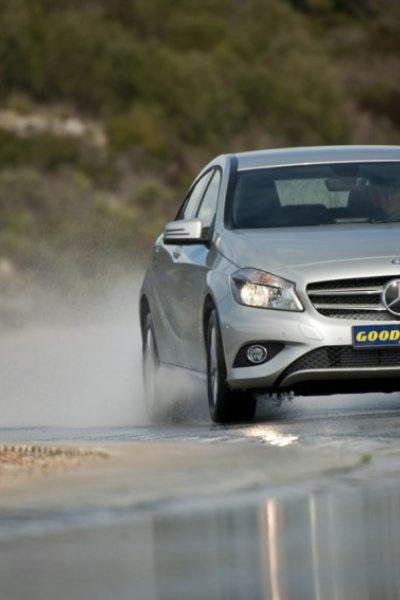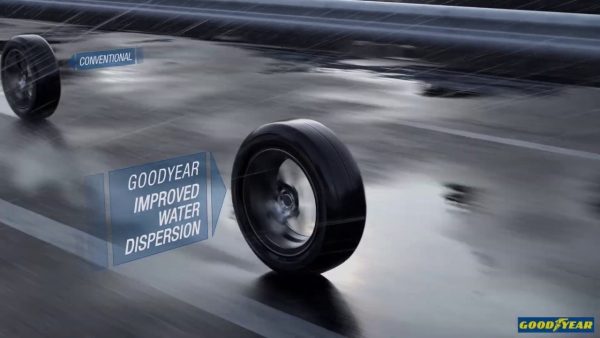
What is aquaplaning and how to avoid it
- Share via Twitter
- Share via Facebook
- Share via Pinterest
- Share via LinkedIn
-
Copy to your clipboard
Aquaplaning, sometimes referred to as hydroplaning, is when a layer of water builds up between your tyres and the road surface. This break in contact between your tyres and the road results in a loss of control over your vehicle and the results can be devastating.
What is Aquaplaning?
Aquaplaning, sometimes referred to as hydroplaning, happens when a layer of water builds up between your tyres and the road surface. This break in contact between your tyres and the road results in a loss of control over your vehicle and the results can be devastating.
What Causes Aquaplaning?
Aquaplaning is a common issue in the UK, caused by the high amount of rainfall we have throughout the year. Because of this, it is very typical for water to build up on the roads and as such get caught underneath your tyres as you drive.
Aquaplaning happens when the volume of water that you are passing on is greater than the volume of the thread on your tyres. This means the grooves on your tyres cannot dissipate the amount of water on the road making the car aquaplane.
Aquaplaning can be really dangerous. Typically, aquaplaning affects the front tyres as the rear tyres are left on drier surfaces. As braking systems are usually in the front wheel, this means that in these conditions, steering and braking inputs will go and you will have no control over the vehicle.
If you have under-inflated tyres, you may be more likely to aquaplane as your tyres will not be able to disperse the water as efficiently as correctly inflated tyres.
How to Avoid Aquaplaning
There are several steps you can take to avoid aquaplaning.
- Avoid driving in treacherous conditions – if there is a rain related weather warning in your area, try to avoid any unnecessary travel
- Keep your tires correctly inflated – correct tyre pressure prevents your tyres from sagging, which will decrease your tyre’s capability to disperse water from underneath the tyre
- Slow down – if there’s a sudden downpour in front of you, slow down. The faster you drive, the harder it is for your tyres to disperse water
- Avoid puddles & standing water – where possible, avoid driving straight through a puddle or an area of standing water
- Avoid sudden actions – try to avoid hard breaking and quick turns
- Check your tyre tread – if you have to drive in the rain, check your tread and make sure it’s safe to drive.
- Use drier tracks – if you can, follow the tracks of the vehicle in front of you. There will be less water for your tyres to disperse here, but always remember to maintain a safe distance
- Use winter tyres – winter tyres are designed to cope with wintry conditions such as increased rainfall. Winter tyres have sipes, which drastically increase the amount of water they can disperse from underneath the tyre
How Can You Tell if your Car is Aquaplaning?
You will feel your car aquaplaning if you drive at speed on a consistent amount of water on the road. There are a few signs to note if your car aquaplanes:
- You will feel the steering wheel becoming “light” in your hand
- You will hear the engine making more noise than usual
- Your car will not respond to you, and the back end of your car will start drifting from side to side (known as fishtailing)
- You will feel like you’ve dropped the clutch down the gears while driving at speed
What to do if You Aquaplane?
If the worst happens and you notice your vehicle aquaplaning, you should do the following:
- Stay calm – avoid panicking and making any sudden actions which could make things a lot worse
- Turn off cruise control – if you’re using cruise control, turn it off and get back in full control of your vehicle
- Ease off the accelerator – let your car slow down naturally
- Hold the steering wheel straight – once the lightness of the steering wheel returns to normal, you will be getting more bite back on the road surface
- Don’t hit the brakes hard – once you can feel your tyres are back on the road, you can apply the brakes gently to reduce your speed
- Breathe.
The Importance of Tyres
Aquaplaning reinforces just how important your tyres are. They are the only thing connecting you to the road, and if they can’t disperse the water quickly enough, you’re in trouble.
Tyre experts, TyreSafe, claim that in good conditions, a tyre can dissipate and remove enough water to fill a standard bucket in 7 seconds.
If your tyre tread is low, this puts you at increased danger in hazardous weather. Although the legal limit is just 1.6mm of tread on your tyres, we’d recommend replacing your tyres before they get to that stage, so that you remain as safe as possible.
The Vector 4Seasons Gen-3 from Goodyear provides excellent aquaplaning resistance over the lifetime of the tyre.
The Aqua Control Technology of the tyre means grooves in the tyre evolve over time to ensure continuous water dispersion over the lifespan of the tyre.
